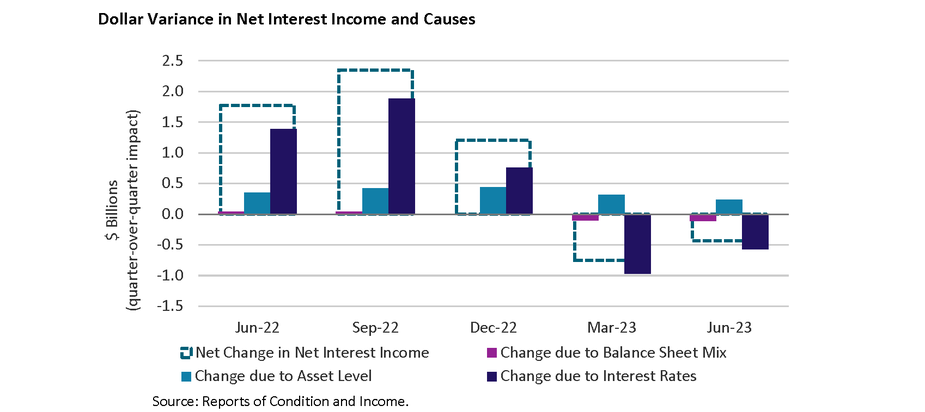
- Net interest income (NII), the primary source of revenue at community banking organizations_ (CBOs), climbed in 2022 with strong interest income growth compared to interest expense. Conversely, NII has declined through 2Q 2023, compressing net interest margins. A variance analysis isolating each contributing factor indicates the greatest negative impact has been from interest rate changes.
- The rising interest rate environment provided a boost to NII in 2022, improving NII at CBOs each of the last three quarters of the year. Beginning in 2023, however, the continued high interest rate environment began causing lower NII as funding costs have increased and exceeded growth in asset yields.
- Changes to balance sheet mix—the mix of earning assets and interest-bearing liabilities as a percentage of total assets—caused little change in NII in 2022. While the impact has been less than that of other factors, balance sheet mix has caused NII to decline in 2023 as the negative impact of shifts to interest-bearing funds has exceeded the positive impact of shifts to earning assets.
- Partially offsetting the decline in NII caused by increasing costs and unfavorable changes in balance sheet mix has been the asset level. As asset levels grow, more interest income is generated. Asset levels have continued to increase in 2023 and provide additional interest income, though to a lesser extent than previous quarters.
Questions or comments? Please contact KC.SRM.SRA.CommunityBankingBulletin@kc.frb.org
Endnotes
-
1
Community banking organizations are defined as having less than $10 billion in total assets.
